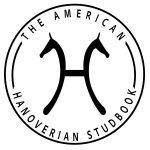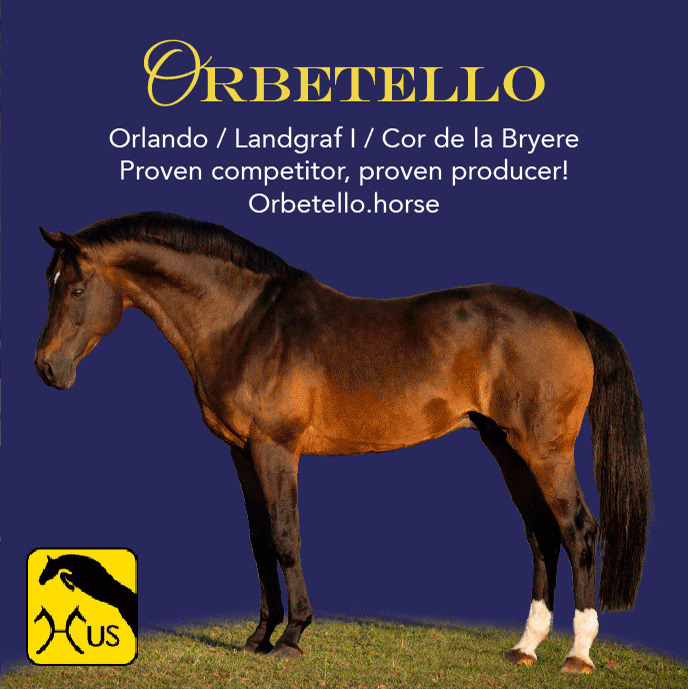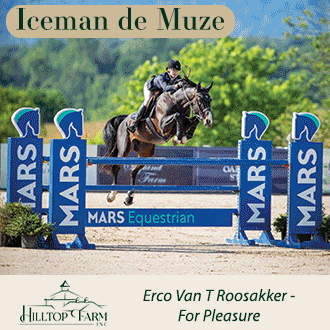
One Society, Three Registries

 About the Breeds: Hanoverians, Rhinelands, and American Hanoverian Riding Ponies
About the Breeds: Hanoverians, Rhinelands, and American Hanoverian Riding Ponies
The American Hanoverian Society
The American Hanoverian Society (AHS) was founded in 1978 with the goal of promoting and advancing the breeding of Hanoverian horses in the United States. Operating as an official daughter society of the Hannoveraner Verband in Germany, the AHS adheres to the same rigorous standards and principles that have made Hanoverian horses renowned worldwide. This partnership ensures that breeders in the United States maintain a strong connection to the traditions and expertise of one of the most prestigious breeding organizations in the world, while also having full autonomy to continue its development to meet the unique needs of North American breeders.
Today, the AHS oversees a variety of initiatives, including inspections, registrations, and performance testing, to support its mission of fostering excellence in sport horse breeding. Its management has expanded to Rhineland horses and American Hanoverian Riding Ponies, magnifying its reach while upholding the same commitment to quality, performance, and versatility.
 Hanoverian Horse
Hanoverian Horse
The Hanoverian horse traces its origins to the Kingdom of Hanover in Germany, where its studbook was officially established in 1888. This breed is the result of centuries of careful selection and breeding, creating a horse that excels in dressage, jumping, and eventing. The American branch of the Hanoverian studbook was initiated in 1978 with the founding of the AHS.
Known for their noble appearance, harmonious conformation, and powerful, elastic gaits, Hanoverians are celebrated worldwide as versatile and athletic partners. They possess a remarkable temperament, making them highly trainable and suited for a wide range of equestrian disciplines. Their consistent performance at the highest levels of international competition is a testament to the breed’s quality and reliability.
 Rhineland Horse
Rhineland Horse
The Rhineland horse, which is also rooted in Germany, is bred under the principles established by the Rhineland Studbook. The studbook was founded in Germany in 1892 and was introduced to the United States in 2015 under the guidance of the American Rhineland Studbook (ARS), managed by the AHS. This expansion offered U.S. breeders the opportunity to work within an internationally recognized breeding program dedicated to producing versatile and talented sport horses.
Rhineland horses are known for their noble character, balanced conformation, and elastic, ground-covering movement. Their temperament, rideability, and adaptability make them ideal for a variety of equestrian disciplines, from dressage to show jumping and beyond. The Rhineland program prioritizes producing horses that meet the highest standards of health, soundness, and performance.
 American Hanoverian Riding Pony
American Hanoverian Riding Pony
The American Hanoverian Riding Pony is the newest addition to the AHS’s programs. In Germany, the Association of Pony and Small Horse Breeders Hannover is tasked with managing the registration of German Riding Ponies, and the American Hanoverian Riding Pony Studbook is based on these same principles.
American Hanoverian Riding Ponies are bred for performance, with exceptional movement, rideability, and suitability for dressage, jumping, and eventing. With their compact size and manageable nature, they provide youth riders and smaller adults with the opportunity to enjoy the same quality and versatility found in Hanoverian and Rhineland horses.
By preserving the rich traditions of these breeds while fostering innovation and growth in North America, the American Hanoverian Society continues to advance its mission of producing world-class sport horses and ponies.





